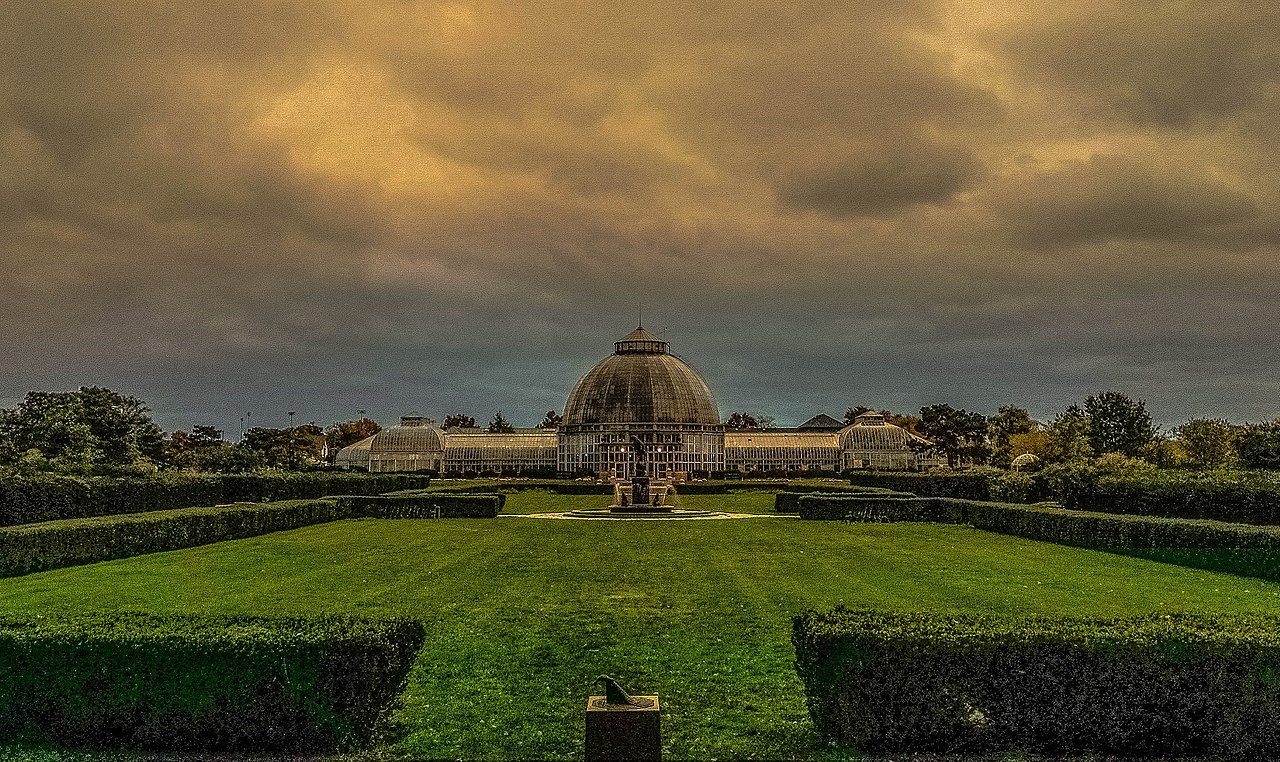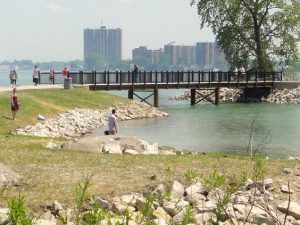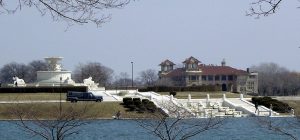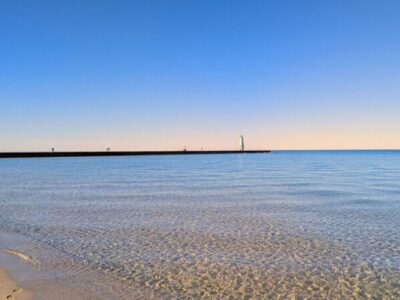
Detroit’s Belle Isle Leads Nation in State Park Attendance
The luster of Belle Isle has returned and is demonstrated by the fact that in 2017 over 4.2 million people attended this state park, making it the most attended state park in the nation. This provides further evidence of Detroit’s revival and is helping the city achieve competitive advantage for the future.
Belle Isle is a 982-acre island situated in the upper end of the Detroit River with spectacular views of Downtown Detroit, Canada, and freighters traversing the St. Lawrence Seaway. It is probably best described as a lush oasis, connected to Detroit by the MacArthur Bridge, that is rich with unique architecture, fountains, statues, and natural resources.
The island was originally settled by French explorers in the 1700s, who referred to the area as Hog Island because livestock were allowed free range. In 1845, it was renamed Belle Isle in honor of Miss Isabelle Cass, the daughter of then Governor General Lewis Cass. The City of Detroit acquired the island in 1879 and contracted Frederick Law Olmsted to design and develop it as a public park. Olmstead is most famous for designing New York’s Central Park and the grounds of the 1897 world’s fair in Chicago.
Unique features of Belle Isle include:
![]() The James Scott Memorial Fountain, considered the focal point of Belle Isle and the most iconic symbol on the island;
The James Scott Memorial Fountain, considered the focal point of Belle Isle and the most iconic symbol on the island;
![]() The William Livingston Memorial Light, the only marble lighthouse in the nation;
The William Livingston Memorial Light, the only marble lighthouse in the nation;
![]() The Anna Scripps Whonitcomb Conservatory, the oldest conservatory in the country;
The Anna Scripps Whonitcomb Conservatory, the oldest conservatory in the country;
![]() The Belle Isle Aquarium, one of oldest in North America;
The Belle Isle Aquarium, one of oldest in North America;
![]() The Detroit Yacht Club, one of the largest and oldest private clubs in North America founded in 1868;
The Detroit Yacht Club, one of the largest and oldest private clubs in North America founded in 1868;
![]() The Detroit Boat Club, the oldest rowing club in the U.S.; and
The Detroit Boat Club, the oldest rowing club in the U.S.; and
![]() Dossin Great Lakes Museum that boasts the world’s largest known collection of model ships.
Dossin Great Lakes Museum that boasts the world’s largest known collection of model ships.
Detroit’s fiscal problems over the last few decades necessitated cutbacks at the park, which caused much of this heralded oasis to fall into disrepair. Then in 2013, the State of Michigan signed a 30-year lease to operate and manage it as the 102nd State Park in Michigan. This lease saved Detroit $4-6 million annually and improved upkeep of the park. Michigan Department of Natural Resources now operates, manages, and stewards the park, in partnership with the City of Detroit, the Belle Isle Conservancy that assists with awareness, historical preservation, and fund-raising for capital projects, the Belle Isle Park Advisory Committee, and others.
The improvements to Belle Isle have been amazing and truly restored its luster. Examples of improvements include: new and rehabilitated restroom facilities; refurbished shelters; new vendors for food, canoes, and kayaks; new trash barrels; conversion of the former police station to a Welcome Center; new and improved trails; new recreational facilities; restoration of the Scott Fountain; and improvements to the Aquarium and Conservatory.
However, equally important has been the ecological restoration work on Belle Isle. In 2013, Friends of the Detroit River and numerous partners
secured Great Lakes Restoration Initiative funding to reconnect Blue Heron Lagoon to the Detroit River, restoring fish access to 38.5 acres of existing wetlands and other habitats, and to 2.2 miles of canal habitat, including coastal wetlands designed as nursery habitat. Also completed in 2013 by Friends of the Detroit River and numerous partners with Great Lakes Restoration Initiative funding was a project that enhanced habitat at Belle Isle’s South Fishing Pier. Approximately two acres of wetlands were re-created downstream of an existing spawning reef that is adjacent to the fishing pier. In addition, work is underway to enhance habitats of Lake Okonoka for birds, fish, amphibians, and reptiles, and to restore approximately 200 acres of forested wetlands on the island.
Finally, Belle Isle is getting a new 1.5-acre garden in front of the Nancy Brown Peace Carillon. This world-class garden is being designed by Dutch landscape architect Piet Oudolf who is one of the most influential garden designers in the world. Chicago has the Lurie Garden in Millennium Park and New York City has the High Line Garden, but Detroit will soon have the Oudolf Garden that will be a new major attraction on Belle Isle.
Not only are people coming back to Belle Isle, but so are wildlife. In 2016, the Detroit Zoo and U.S. Fish and Wildlife Service observed 24 active common tern nests at recently restored nesting habitat on Belle Isle. Lake sturgeon are back spawning in the Detroit River after a 30-year absence. Beaver have returned to Belle Isle after an over 100-year absence from the Detroit River. This winter, Michigan Department of Natural Resources’ biologists observed a bald eagle nest on Belle Isle. Considering that during the 1960s the Detroit River was one of the most polluted rivers in North America, this ecological revival is amazing. And we must always remember that if this ecosystem is cleaner for fish, birds, and beaver, it is cleaner for humans because we share the same ecosystem.
In total, $34.5 million has been invested in Belle Isle in the last five years. These improvements are improving visitor experiences, enhancing quality of life in Detroit, and helping Detroit achieve competitive advantage for the future.
Belle Isle has long been a place of lasting memories of family picnics and just relaxing along the banks of the Detroit River. And now its luster has been restored and is being validated by the over 4.2 million people who visited Belle Isle in 2017. Many people often describe the Detroit RiverWalk as a beaded necklace, where the beads are unique waterfront parks like Gabriel Richard, Mt. Elliott, and West Riverfront parks, and that the strand of the necklace is the greenway trail. I particularly like this metaphor and would extend it one step further to describe Belle Isle as the crown jewel of this necklace. If you haven’t been to Belle Isle lately you need to visit. You won’t be disappointed.
(Note from Great Lakes Bureau Chief Mary Ellen Geist: We are pleased to welcome Dr. John H. Hartig,as a regular contributor to DPTV’s greatlakesnow.org. He is currently a Fulbright Canada Research Chair in Global Governance at Balsillie School of International Affairs in Waterloo, Ontario. For the past 14 years, he served as Refuge Manager for the Detroit River International Wildlife Refuge. John has received a number of awards for his work, including the 2017 Community Peacemaker Award from Wayne State University’s Center for Peace and Conflict Studies, the 2016 Edward G. Voss Conservation Science Award from Michigan Nature Association, the 2015 Conservationist of the Year Award from the John Muir Association, and the 2013 Conservation Advocate of the Year Award from the Michigan League of Conservation Voters. He has authored or co-authored over 100 publications on the environment, including four books: Bringing Conservation to Cities; Burning Rivers; Honoring Our Detroit River, Caring for Our Home; and Under RAPs: Toward Grassroots Ecological Democracy in the Great Lakes Basin. John’s most recent book titled Bringing Conservation to Cities won a Gold Medal from the Nonfiction Authors Association in the “Sustainable Living” category and a bronze medal from the Living Now Book Awards in the “Green Living” category.)








